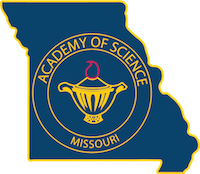Competition Guidelines
To compete at the annual state competition, students must qualify at their respective regional competition. Click here to view regional information: https://moacademysci.org/regions/.
Research Guidelines
- Missouri Junior Academy adheres to the rules, guidelines, and protocols promoted by the Intel ISEF.
- All projects must follow the same protocols as your regional fair and must be certified by the appropriate committee (SRC or IRB) before experimentation begins.
- If your project is subject to any specific certifications, a copy of the certifications MUST be brought to the state competition. Presentations without these certifications from their regional science fair committee will not be eligible for competition.
- The necessary certification forms are available through Society for Science and the Public.
Oral Presentation
Team presentations are not allowed at the state competition. If teams were allowed at the district level, the team must select ONE individual to present at the state competition, who will be eligible for any awards.
Presentations will be checked in immediately following registration. Please plan to arrive early to allow for all steps in the registration process.
Presentations are limited to twelve minutes with three minutes for questions from judges. Presenters will not be allowed to go beyond the allotted time.
Presentations are subject to the following guidelines:
- PowerPoint 2010 or newer.
- Compatible with Windows 10 or newer.
- Presentation should be on a USB drive.
- Video Clips (mov. Quick Time, Real Player, etc.) are only allowed if they are a part of the presented research project (limited to 1 minute maximum).
- No props are allowed during presentations
Research Paper
To participate in the state competition, each qualifying student will submit a project paper (including abstract) during the registration process.
The paper should be formatted in a style typical of a scientific research paper format (title, abstract, introduction, materials and methods, results, discussion, literature cited).
- The title should be descriptive of the project.
- The abstract should be a brief summary of the project (in less than 250 words).
- The introduction should provide necessary background information for the reader to understand the project. The hypothesis should be included in this section.
- The materials and methods section provides the reader with the necessary to steps to repeat the project. It should be written in paragraph form (not lists or steps like a recipe). If following/adapting from an already published method, it is appropriate to cite that method and not provide detailed methodology.
- The results section should provide summarized results of the project. It should not include all raw data that collected, but averages of all trials. It is ideal to include statistics to show significance or lack of. There should be no interpretation of the data in this section.
- The discussion section provides interpretation of the results. What can be concluded? It is provides insights into the project as to what may be improved or changed in the future if the project was to be repeated.
- The Literature Cited section should include all citations located within the paper. These should be organized alphabetically.
- All content that is not the students should be cited using in-text citations and fully cited in the literature cited section. For further guidance on writing a scientific paper, you may contact the district director.
- Format: Times New Roman font, size 12, 1.5 spacing, 1 inch margins, page numbers located at bottom center of page.
- Papers should be brief and concise. Page length should not exceed 10 pages.
